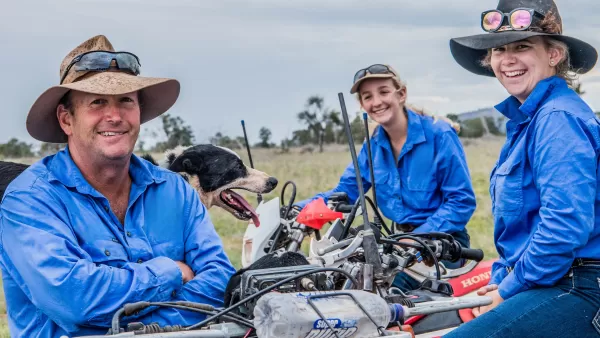Kalbar Horticulture Farm
Energy Savings: 11% | Cost Savings: $5,000 | Capital Cost: $16,000 | CO2 Savings: 15.4 | Project Status: implemented
Industry:
Horticulture
Location:
South-East
Pump Type:
Bore, Centrifugal
Irrigation Type:
Micro irrigation, Travelling gun
Technology:
Irrigation and Pumps, Variable Speed Drives
The farm, near Kalbar, produces a variety of vegetables on 75ha and is irrigated year-round depending on rainfall. Water is supplied from onsite irrigation dams which are replenished from the local irrigation scheme and bores.
It is a medium-sized site consuming 180,000 kWh per year at a cost of approximately $50,000. The farm grows 4 types of vegetables, lucerne, and barley.
The infrastructure contributing to the energy consumption onsite consists of:
- An old 37kW pump that pumps from the dam
- A new irrigation pump with Variable Speed Drive on a neighbouring property
- 1 pump from the river that is supplied by the irrigation scheme
- 3 bore pumps
- A shed with no cold room facilities
A recent energy audit showed how improving the current systems can lead to energy and cost savings. The energy audit recommended the following changes to improve efficiency and reduce costs:
- Replace the 37 kW dam pump with a new pump of the same size but including Variable Speed Drive (VSD), due to the different pressure requirements of the irrigation systems.
- Installation of a 12W solar system for the shed roof.
- Installation of a 10kW ground-mounted solar system for the river pump.
Table 1. Energy and cost savings from audit recommendations
| Recommendations | Annual Energy Savings (kWh) | Annual Cost Savings ($) | Emission Savings (tCO2-e) | Capital Cost ($) | Payback Period (years) |
| Pump replacement | 19,000 | 5,000 | 15.4 | 16,000 | 3.2 |
| 10kW solar system | 18,700 | 5,000 | 15.1 | 22,800 | 3.5 |
| 12kW solar system | 15,500 | 4,000 | 12.6 | 16,000 | 3.8 |
| Total | 53,200 | 14,000 | 43.1 | 54,800 | 3.5 |
The grower proceeded with replacing the dam pump and will consider installing the solar in the future.
By installing the recommendation in the audit, the business is expected to reduce energy consumption by 11% and costs by 10%, with carbon emission savings of 15.4 tCO2-e per year. Actual savings will be updated once the measurement and verification process is complete.
Table 2. Pre and post implementation energy and cost savings
| Metric | Pre- implementation | Post- implementation | Reduction (%) |
| Energy Consumption (kWh) | 180,000 | 161,000 | 11 |
| Cost ($) | 50,000 | 45,000 | 10 |
An energy audit is a good investment
An energy audit is a great first step in moving a business towards a more efficient future by reducing energy use, costs, and carbon emissions on site.
The Energy Savers Plus Extension Program was delivered by the Queensland Farmers Federation with support and funding from the Queensland Department of Energy and Public Works.

